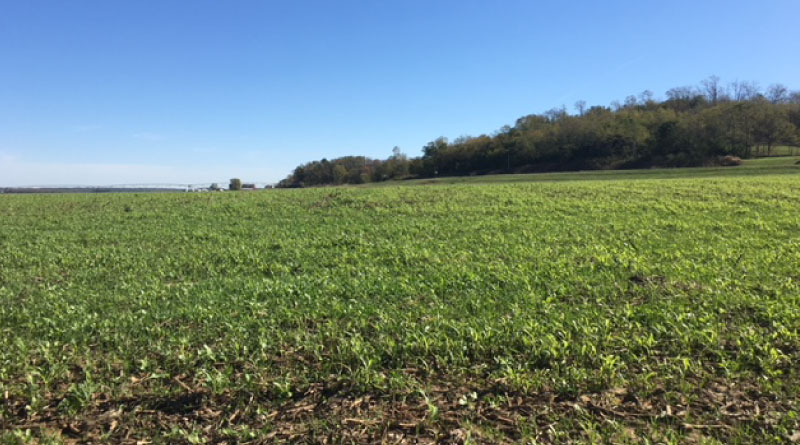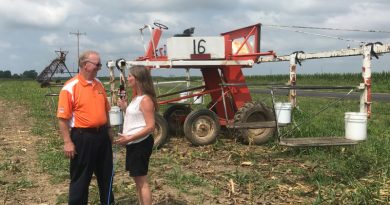Considering cover crops
by Kevin Burrus
Cover crops can generate a deep passion with some farmers and an eyeroll with others. This article is an opinion piece formed from my own experiences, so please recognize cover crops are not a one size fits all farms topic.
START SMALL
Two neighbor/mentors encouraged our farm to use cover crops. Wisely, they both encouraged us to start small. This allows for some failures. Very few new practices will work perfectly without some trial and error. You should expect that. Also, try to stay in an acreage range where failure is “OK” until your farm has gone through a few various fall and spring weather patterns. Ideally, getting a handle on how a cover crop integrates with a warm/early fall (more fall growth) versus a later/wetter fall (less fall grow) is an important skillset to learn. The same can be said for a challenging spring that may bring cooler/wetter soil temperatures beyond an ideal planting date for the next commercial crop. Start small, expect a learning curve and try to gain experiences.
COVER CROP IS A CROP
Timeliness of establishment and species selection are important steps that need to be planned. Depending on which species fits your farm, understanding the window for establishment is very important, planting a fall cover that is not frost-hardy too late will likely result in wasted time, money and effort with very little gain. I try to establish drop dead dates for species sewing ahead of harvest so I don’t become emotionally invested and then do something with a low likelihood of success. Speaking of establishment, starting small means seeding could be conducted some morning while the dew is burning off, but if your cover crop endeavor grows in size, having the time/equipment to get a cover crop sewn can become a challenge. If your farm operation is stretched for labor, consider later planting date species or recognize this might not be a fit.
TERMINATION
Building off of the cover crop is a crop theme, how farmers manage crop residue and seed bed preparation is a part of any farm’s operation. Cover crops impact how farmers view seed bed preparation by altering the amount of residue, if it needs to be terminated and what practices will be employed to properly plant the next commercial crop. In general there are two classes of cover crops, overwintering and winter kill. Overwintering tend to be able to be planted later, but require some form of termination – spraying, tillage or crimping either ahead of or near time of planting. Terminating a cover crop can be a challenge and having a good plan A and fallback plan B are things I would suggest thinking through before sewing a cover. Winter kill cover crops have less springtime management, but are more sensitive to earlier fall establishment and may bring fewer benefits. Having a plan for how to terminate the cover and what you expect the seed bed to look like is wise to consider.
WHY
There are many published benefits to using a cover crop. Personally we have used a fair amount of lower benefit, lower risk species. That said, we have dealt with less washing, less soil crusting in the spring, better weed suppression and more water infiltration. That is not the complete list of benefits, but those are what I personally have seen over time in our operation. I feel those benefits compensate our farm well enough to justify the time, effort and expense of covers. However, that does not mean they are a fit for someone else’s farm.
To summarize, I strongly encourage farmers to start small, have a plan for species selection and termination strategy. Expect some failures or at the very least surprises and expect differences in weather to impact success/failures. Lastly, find mentors or resources. People working in this space can offer guidance to avoid learning everything the hard way.






